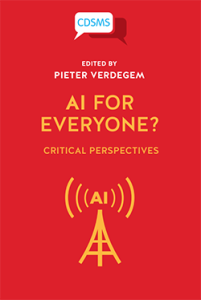Could you use AI to understand philosophy?

Philosophers have been asking me if we can use AI to help understand philosophy (there’s even grant money available). For example, could you use AI to determine the degree to which the ideas of Hegel are present in Strawson?
I did a short assessment of what was required, then asked ChatGPT for it’s response:
Prompt
I am also becoming fairly certain ChatGPT does not have the capability we are talking about. If the text in both sources is identical, even MS Word could compare them. If it is a conceptual comparision, I don’t think ChatGPT has the knowledge. It was trained to converse, but that’s all it was trained for. What will need to happen now is for an AI to be trained in philosophy. Which means taking every philosophical text we have, manually annotating every term, sentence and paragraph for what it is saying, what it means, what its philosophical significance is, who debates it (how, why and where). It means agreeing the meaning of every philosophical term, or teaching the AI all the alternative interpretations in detail. I can imagine the debates over just the annotation will repeat every philosophical debate we’ve ever had all over again. So it will have to learn all the alternatives. Maybe one day, but it will be a massive undertaking. It may actually be impossible and raises a nice philosophical question – can we codify humanity’s understanding of philosophy at all, even catering for all the various interpretations? Is it a fully definable field of knowledge or is a certain “fuzziness” an essential property of philosophy? Because an AI needs to understand it both as a human activity as well as a body of thought.
ChatGPT Response
The statements you provided contain a mix of accurate and speculative assertions. Let’s analyze them one by one:
- “If the text in both sources is identical, even MS Word could compare them.”
This statement is generally accurate. If the texts in two sources are identical, any text comparison tool, including MS Word, can detect the matching content. It’s a straightforward task of comparing character sequences.
- “If it is a conceptual comparison, I don’t think ChatGPT has the knowledge. It was trained to converse, but that’s all it was trained for.”
This statement is partially accurate. ChatGPT is a language model trained to generate human-like responses based on patterns in the data it was trained on. While it can provide information and engage in discussions about a wide range of topics, including philosophy, it does not possess an inherent understanding of concepts. It lacks personal experiences and consciousness, which limits its ability to grasp complex philosophical nuances in the same way humans do.
- “What will need to happen now is for an AI to be trained in philosophy.”
This statement is speculative but reflects a plausible idea. Developing an AI specifically trained in philosophy could potentially enhance its ability to engage in philosophical discussions and provide more nuanced insights. However, training an AI to understand philosophy comprehensively and accurately would be an immense undertaking, requiring extensive annotation and interpretation of philosophical texts.
- “It means agreeing on the meaning of every philosophical term or teaching the AI all the alternative interpretations in detail.”
This statement highlights a significant challenge in training an AI in philosophy. Philosophical terms often carry multiple interpretations and can be subject to ongoing debates. Reaching a consensus on the meaning of every term would be difficult, if not impossible. However, teaching an AI about the alternative interpretations could help it navigate the complexities of philosophical discourse and provide a broader perspective.
- “Can we codify humanity’s understanding of philosophy at all, even catering for all the various interpretations? Is it a fully definable field of knowledge, or is a certain ‘fuzziness’ an essential property of philosophy?”
These questions delve into the fundamental nature of philosophy itself. Philosophy often deals with abstract concepts, subjective interpretations, and unresolved debates. While efforts can be made to codify philosophical knowledge, the inherent complexity and diversity of perspectives in philosophy may make it challenging to fully capture and define. The openness to different interpretations and the existence of philosophical debates contribute to the ongoing nature of philosophical inquiry.
In summary, while an AI trained in philosophy could potentially offer insights and engage in discussions on the subject, capturing the full depth and complexity of philosophy poses significant challenges. The nature of philosophical concepts and ongoing debates necessitates a nuanced understanding that may extend beyond the capabilities of current AI systems.
Technical Details
The following is my conversation with ChatGPT to determine what would be required to teach it philosophy:
What training would be required for you to identify which philosophical books contain the same ideas or arguments or positions?
As an AI language model, my abilities are based on the patterns and correlations I’ve learned from the large amount of text data I’ve been trained on, which includes a diverse range of sources. To identify similarities in philosophical ideas, arguments, or positions from different books, I don’t need additional “training” in the conventional human sense.
However, my effectiveness at this task would rely heavily on the philosophical content in the data I was trained on. Given my current training data (up until September 2021), I can provide a broad comparison and overlap between various philosophical concepts and arguments.
Remember, I don’t “understand” concepts in the way a human does, but I generate responses based on patterns I’ve learned. Here’s an example:
Let’s consider the philosophical positions in “Meditations” by Marcus Aurelius and “Beyond Good and Evil” by Friedrich Nietzsche. Both books touch on ethics and morality. Aurelius, a Stoic, advocates for a life in accordance with nature and virtue, emphasizing discipline, duty, and acceptance. Nietzsche, on the other hand, critiques traditional moral values and encourages the reevaluation of good and evil, promoting the idea of individual and cultural health as metrics for morality. So, while both address morality, their approaches and conclusions differ greatly.
Please note that this is a simplified comparison and these works have many complexities. For deep, detailed comparisons, or to cover philosophical works and ideas that have been published after my last training cut-off in September 2021, you would need a more recent AI model or a human expert.
In the future, if there are advancements that allow AI models to ingest and learn from specific texts in a targeted manner, training an AI on a specific set of philosophical books could potentially enhance its ability to recognize and analyze the commonalities and differences between those specific texts. However, as of my knowledge cutoff in 2021, AI models do not have the ability to read, learn from, or understand new material in a conscious or intentional manner after their training has been completed. They can only generate responses based on the data they were trained on.
Would training you to recognize and analyze the commonalities and differences between two specific texts require human annotation of those texts?
As of my last training cutoff in September 2021, training a model like me to recognize and analyze the commonalities and differences between two specific texts would indeed benefit from human annotation. This is because supervised learning, which involves providing the model with both inputs (textual data) and outputs (correct responses or annotations), often yields the best results.
Such human annotations might highlight the key arguments, positions, themes, or stylistic elements of the texts, identify their similarities and differences, and provide interpretative context. The model could then learn to recognize and generate similar annotations when presented with similar textual data. This kind of fine-tuning is often conducted on top of the base model, which has been pre-trained on a large and diverse corpus of text.
It’s important to note that while this process could improve the model’s ability to analyze the specific types of text it was trained on, it would not enable the model to truly understand the content of the text in the way that a human would. The model would simply be identifying and reproducing patterns in the data, not forming its own understanding or interpretation.
Keep in mind that as of my last update, training an AI model requires a significant amount of computational resources and technical expertise, and is usually performed by teams of experts over a period of weeks or months. It’s not currently something that can be done by end users to customize their AI models.
Can you provide examples of the annotations which would be useful for such a task?
Yes, here are examples of types of annotations that could be useful for training a model to recognize and analyze the commonalities and differences between philosophical texts:
1. **Identifying Key Concepts and Arguments:** Label each argument or key concept in the text, including the main philosophical ideas, positions, or claims being made.
Example Annotation: [Argument Start – Argument End] “Author advocates for moral relativism.”
2. **Identifying Evidence or Reasoning:** Label evidence or reasoning used to support each argument or claim.
Example Annotation: [Evidence Start – Evidence End] “Author uses the cultural diversity argument to support moral relativism.”
3. **Identifying Counterarguments or Critiques:** If the text contains any counterarguments or critiques of other ideas, label these.
Example Annotation: [Counterargument Start – Counterargument End] “Author critiques the concept of objective morality.”
4. **Identifying Similarities and Differences with Other Works:** If the text makes explicit reference to other philosophical works or ideas (either agreeing with or disputing them), these references should be labeled.
Example Annotation: [Reference Start – Reference End] “This argument aligns with the ideas of Immanuel Kant.” or “This argument refutes the ideas of Friedrich Nietzsche.”
5. **Identifying Underlying Philosophical Tradition or School:** If the text is part of or is influenced by a specific philosophical tradition or school, like existentialism, rationalism, empiricism, etc., label these.
Example Annotation: [Text Start – Text End] “This text is representative of existentialist philosophy.”
6. **Sentiment Analysis:** Label the sentiment or tone of certain passages, as this might help identify the author’s attitudes toward certain concepts or arguments.
Example Annotation: [Passage Start – Passage End] “Sentiment: Negative. The author is critical of the notion of absolute morality.”
These annotations are hypothetical and would need to be designed and implemented by a team of experts in machine learning and philosophy to be effective.
Let us assume I have the required expertise in machine learning and philosophy. If I use appropriate API’s, is it possible to train you in these tasks?
As an AI developed by OpenAI, I don’t have the capability to be directly trained by end-users. My responses are generated based on a language model trained on a diverse range of internet text. However, there are ways you could potentially use GPT-4 or similar models for this task with the right tools and expertise.
As of my knowledge cut-off in September 2021, OpenAI allows fine-tuning of base models, which is a form of training where the model is further trained on a specific dataset to customize its outputs. The process of fine-tuning requires high levels of technical expertise in machine learning, as well as substantial computational resources.
If you have that expertise, you could create a fine-tuning dataset with the type of annotations I mentioned in the previous message, and use that dataset to fine-tune a copy of the base model. You would also need access to a high-performance computing infrastructure to carry out the fine-tuning process. You could then use APIs to interact with the fine-tuned model and get the customized outputs you’re looking for.
However, keep in mind that as of my last update, OpenAI had certain restrictions and usage policies around fine-tuning and the use of fine-tuned models. You would need to consult the most recent OpenAI policies and possibly seek permission from OpenAI before embarking on this process.
Also, remember that even with fine-tuning, an AI model will not truly understand the texts or the philosophical concepts in the same way a human would. It would simply be learning to generate responses based on patterns in the data. It’s always important to verify the outputs of the AI and consult a human expert when necessary.
List as many annotations as you can for training a LLM to recognize and analyze the commonalities and differences between philosophical texts?
Here are a variety of annotations that could potentially be used for training a language model like GPT-4 to analyze the commonalities and differences between philosophical texts. Note that these examples assume a good understanding of philosophy and machine learning. This process would require a large number of examples for each annotation to be effective:
1. **Argument Identification:** Label specific arguments made in the text.
Example Annotation: [Argument Start – Argument End] “Type: Argument. Content: Existence precedes essence.”
2. **Evidence or Reasoning Identification:** Label the evidence or reasoning supporting each argument.
Example Annotation: [Evidence Start – Evidence End] “Type: Evidence. Content: Anecdote about a worker choosing his career.”
3. **Philosophical School or Tradition:** Label the philosophical tradition or school the argument belongs to.
Example Annotation: [Text Start – Text End] “Type: Philosophy School. Content: Existentialism.”
4. **Counterargument Identification:** Label specific counterarguments or critiques of arguments made.
Example Annotation: [Counterargument Start – Counterargument End] “Type: Counterargument. Content: Critique of determinism.”
5. **Author Attribution:** Label the author of the argument or idea.
Example Annotation: [Text Start – Text End] “Type: Author. Content: Jean-Paul Sartre.”
6. **Historical Context:** Label the historical context of the argument or idea.
Example Annotation: [Text Start – Text End] “Type: Historical Context. Content: Post-World War II France.”
7. **Theme Identification:** Label major themes covered in the text.
Example Annotation: [Theme Start – Theme End] “Type: Theme. Content: Freedom and Responsibility.”
8. **Concept Analysis:** Label how the text analyses or explains a philosophical concept.
Example Annotation: [Concept Analysis Start – Concept Analysis End] “Type: Concept Analysis. Content: Exploration of ‘bad faith’.”
9. **Cross-Text Reference:** Label explicit references to other philosophical works or philosophers.
Example Annotation: [Cross-Text Reference Start – Cross-Text Reference End] “Type: Cross-Text Reference. Content: Reference to Nietzsche’s concept of the ‘Overman’.”
10. **Sentiment Analysis:** Label the sentiment or tone of certain passages.
Example Annotation: [Passage Start – Passage End] “Type: Sentiment. Content: Critical.”
11. **Argument Similarity:** Label arguments that are similar to arguments from other texts.
Example Annotation: [Argument Start – Argument End] “Type: Similar Argument. Content: Similar to Kant’s moral philosophy.”
12. **Ethical Stance:** Label the ethical position supported or critiqued in the text.
Example Annotation: [Stance Start – Stance End] “Type: Ethical Stance. Content: Supports moral relativism.”
Remember, these are merely illustrative examples. Actual annotation schemes would need to be carefully developed by experts in both philosophy and machine learning, taking into account the specificities of the texts and the capabilities and limitations of the language model being used. Additionally, the application of these annotations and the training of the model would need to follow OpenAI’s usage policies and guidelines.
How many different philosophical texts would a LLM need to use to make a useful learning set for the ability to compare philosophical texts and identify shared ideas?
Given the complexity of the task, and considering the usual sizes of datasets for similar complex tasks in machine learning, you might consider starting with thousands of philosophical texts for your training set. A reasonable range could be between 5,000 to 20,000 philosophical texts, each annotated appropriately, depending on the scope of the philosophical traditions and ideas you aim to cover.
Remember, though, it’s not just about quantity but also about the quality and diversity of the data. You would want a balanced representation of different philosophical traditions, topics, authors, and time periods to make sure the model can handle a wide range of philosophical comparisons. Also, the quality of the annotations is vital – the more accurately and thoroughly the texts are annotated, the better the model will likely perform.
In addition to these texts, you’ll likely also need a validation set (a subset of data used to provide an unbiased evaluation of a model fit on the training dataset and tune model hyperparameters) and a test set (a dataset used to provide an unbiased evaluation of a final model fit on the training dataset). These should be separate from your original training set and could each be 10-20% of the size of the training set.
Lastly, remember these are rough estimates and the exact number could vary widely based on the specifics of the task and the capabilities of the model being used. The process of machine learning involves a lot of experimentation and iteration, so you would likely need to adjust your approach as you go along based on the results you’re getting.
What is the average number of words in a philosophical book published in the last 100 years?
The average length of a book can vary significantly depending on the author, the topic, the intended audience, and other factors. However, as a rough estimate, most books tend to fall within the range of 50,000 to 100,000 words.
Specifically for philosophical texts, they might lean towards the upper end of that range, or even exceed it, considering the complexity and depth of the subject matter.
Please note that this is a broad generalization. There are philosophical works that are significantly shorter, such as essay collections or introductory guides, and others that are much longer, such as comprehensive treatises or compilations of a philosopher’s entire work.
In any case, for the purposes of training a machine learning model, the total word count might be less relevant than the number of unique arguments, concepts, or ideas in the text, which could vary widely from one philosophical text to another regardless of their lengths.
Provide a recommended computer configuration for such a task.
The time it would take to train a large language model (LLM) like GPT-4 on a dataset of 10,000 annotated philosophical texts to a sufficient level can vary widely depending on a number of factors, including the size and complexity of the model, the quality and complexity of the annotations, the specific machine learning techniques used, the quality of the hardware, and more.
For context, training the original GPT-3 model, which has 175 billion parameters, reportedly took several weeks on a cluster of high-performance GPUs. Your task would be less computationally intensive than this, since you would be fine-tuning the model on a specific dataset rather than training it from scratch, but it would still likely take several days to weeks on the kind of hardware described in the previous message.
Keep in mind that this is a rough estimate, and the actual time could be shorter or longer depending on the factors mentioned above. Also note that training the model is only part of the process. You would also need to spend time on preprocessing your data, developing and testing your model, analyzing the results, and possibly iterating on your approach based on those results. All of these steps can also be time-consuming.
It’s also worth noting that, as of my knowledge cut-off in September 2021, training a model like GPT-4 would be at the cutting edge of machine learning research and would likely require a high level of expertise and resources. Be prepared for unexpected challenges and complexities along the way.
 AI Act Compliance Checker now live online
AI Act Compliance Checker now live online



 We are entering a new era of technological determinism and solutionism in which governments and business actors are seeking data-driven change, assuming that Artificial Intelligence is now inevitable and ubiquitous. But we have not even started asking the right questions, let alone developed an understanding of the consequences. Urgently needed is debate that asks and answers fundamental questions about power. This book brings together critical interrogations of what constitutes AI, its impact and its inequalities in order to offer an analysis of what it means for AI to deliver benefits for everyone. The book is structured in three parts: Part 1, AI: Humans vs. Machines, presents critical perspectives on human-machine dualism. Part 2, Discourses and Myths About AI, excavates metaphors and policies to ask normative questions about what is ‘desirable’ AI and what conditions make this possible. Part 3, AI Power and Inequalities, discusses how the implementation of AI creates important challenges that urgently need to be addressed. Bringing together scholars from diverse disciplinary backgrounds and regional contexts, this book offers a vital intervention on one of the most hyped concepts of our times.
We are entering a new era of technological determinism and solutionism in which governments and business actors are seeking data-driven change, assuming that Artificial Intelligence is now inevitable and ubiquitous. But we have not even started asking the right questions, let alone developed an understanding of the consequences. Urgently needed is debate that asks and answers fundamental questions about power. This book brings together critical interrogations of what constitutes AI, its impact and its inequalities in order to offer an analysis of what it means for AI to deliver benefits for everyone. The book is structured in three parts: Part 1, AI: Humans vs. Machines, presents critical perspectives on human-machine dualism. Part 2, Discourses and Myths About AI, excavates metaphors and policies to ask normative questions about what is ‘desirable’ AI and what conditions make this possible. Part 3, AI Power and Inequalities, discusses how the implementation of AI creates important challenges that urgently need to be addressed. Bringing together scholars from diverse disciplinary backgrounds and regional contexts, this book offers a vital intervention on one of the most hyped concepts of our times.